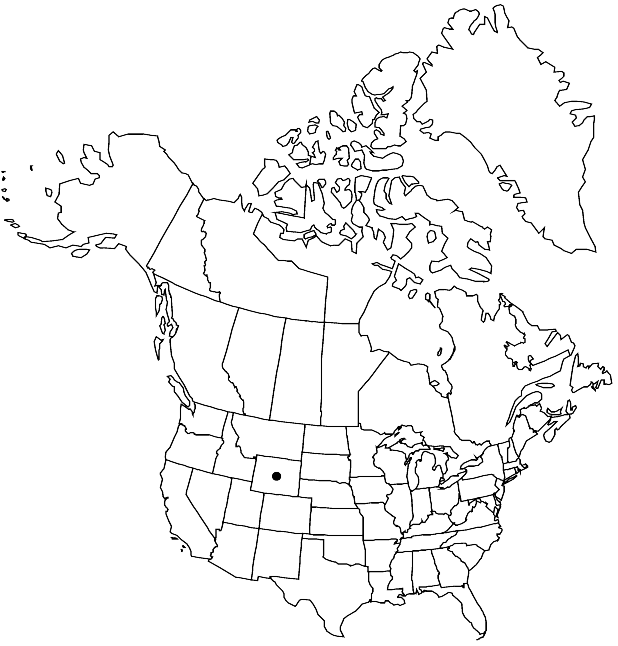Difference between revisions of "Physaria eburniflora"
Brittonia 33: 333. 1981.
imported>Volume Importer |
imported>Volume Importer |
||
| Line 50: | Line 50: | ||
|publication year=1981 | |publication year=1981 | ||
|special status=Endemic | |special status=Endemic | ||
| − | |source xml=https:// | + | |source xml=https://bitbucket.org/aafc-mbb/fna-data-curation/src/2e0870ddd59836b60bcf96646a41e87ea5a5943a/coarse_grained_fna_xml/V7/V7_1047.xml |
|tribe=Brassicaceae tribe Physarieae | |tribe=Brassicaceae tribe Physarieae | ||
|genus=Physaria | |genus=Physaria | ||
Latest revision as of 22:29, 5 November 2020
Perennials; caudex usually simple; densely pubescent, trichomes (sessile), rays often furcate, fused toward base, (nearly smooth). Stems simple from base, prostrate, (arising lateral to rosette), 0.1–0.5 dm. Basal leaves: blade suborbicular, (1–)2.5(–3) cm, (base abruptly narrowed to petiole), margins entire, (flat), (surfaces densely silvery pubescent, trichomes in multiple layers, appressed). Cauline leaves (2–4); blade oblanceolate, ca. 1 cm, (base cuneate), margins entire, (apex acute). Racemes condensed. Fruiting pedicels (divaricate-ascending, nearly straight), 6–10 mm. Flowers: sepals (erect, purplish to greenish), linear-oblong or boat-shaped, 5.5–6.5 mm, (lateral pair more saccate than median); petals (white), spatulate, 9–12 mm, (claw undifferentiated from blade). Fruits strongly didymous, irregular in shape and size, (base slightly cordate, apex with a deep closed sinus), strongly to somewhat inflated, 6–8 × 6–8 mm (± bladderlike, papery); valves (retaining seeds after dehiscence), pubescent; replum elliptic to obovate, not constricted, as wide as or wider than fruit, apex obtuse; ovules 4–8 per ovary; style 4–5 mm, (sparsely pubescent or glabrous). Seeds plump.
Phenology: Flowering May–Jun.
Habitat: Limestone hills, red soil, rocky calcareous slopes, clay depressions, granite and marble detritus
Elevation: 1800-3000 m
Discussion
Selected References
None.
